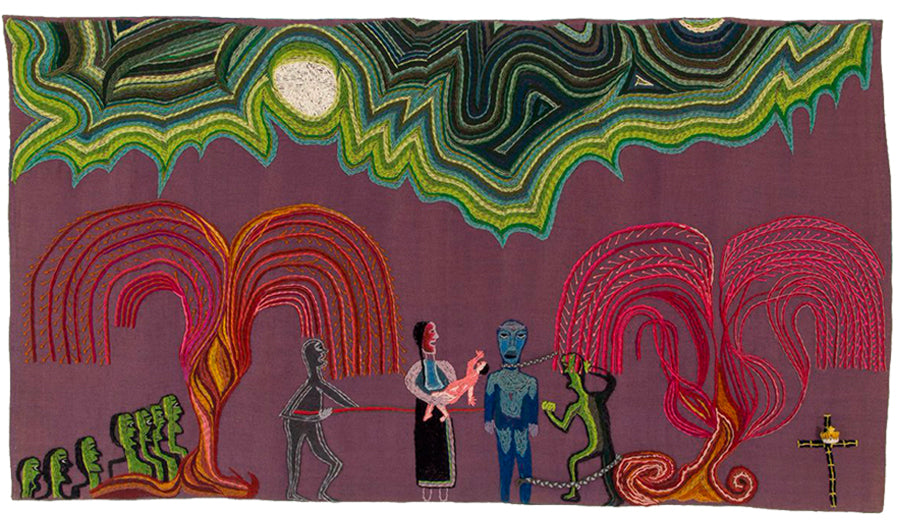
ELOÏSE PTITO - Gracias a la vida: Violeta Parra's Textiles
 Images Courtesy of the Violeta Parra Museum.
Images Courtesy of the Violeta Parra Museum.
While Violeta Parra has long been recognised as “the Mother of Latin American Folk”, a renewed interest in her lesser known breadth of textile artwork has reemerged in recent years. Born October 4, 1917, in San Carlos, Chile, Violeta was a Chilean folk singer, composer, painter, poet, and social activist who cofounded the “Nueva Canción” political movement. Alongside these impressive feats, she was also an expert embroiderer and weaver of “Arpilleras”.

Translating into “burlap” in Spanish and first originating in the shantytowns of Chile, the arpillera is traditionally a brightly-coloured, landscape patchwork picture crafted from wool, thread, and repurposed textile remnants. These embroidered cloth stories employ very simple stitching techniques and were often used to process one’s current reality. Through the emotional recycling of one’s sacred textile scraps, these pictures often become imbued with deep meaning.

Violeta’s pieces differ from the traditional format in that her works are daringly large and confrontational in scale, imagery, and use of colour. The artist first began embroidering her arpillera series in 1958, while being bedridden with a debilitating hepatitis infection. Describing her inventive pieces as “[…] songs that are painted”, it appears as though Parra invented a sort of hybrid folkloric imagery that fearlessly blended 19th-century graphics from the“Lira Popular” with a modern art palette and sensibility.
 In April 1964, the artist famously exhibited her arpilleras, oil paintings, and wire sculptures at the Museum of Decorative Arts of the Louvre in Paris – resulting in the first ever solo exhibition of a Latin American artist in the museum’s entire history. In 1965, François Maspero published her book “Poésie Populaire des Andes”, while in Geneva, a documentary entitled “Violeta Parra, Chilean Embroiderer” was filmed about her life and work.
In April 1964, the artist famously exhibited her arpilleras, oil paintings, and wire sculptures at the Museum of Decorative Arts of the Louvre in Paris – resulting in the first ever solo exhibition of a Latin American artist in the museum’s entire history. In 1965, François Maspero published her book “Poésie Populaire des Andes”, while in Geneva, a documentary entitled “Violeta Parra, Chilean Embroiderer” was filmed about her life and work.
All textile works are currently housed at the Violeta Parra Museum in Santiago, Chile.
